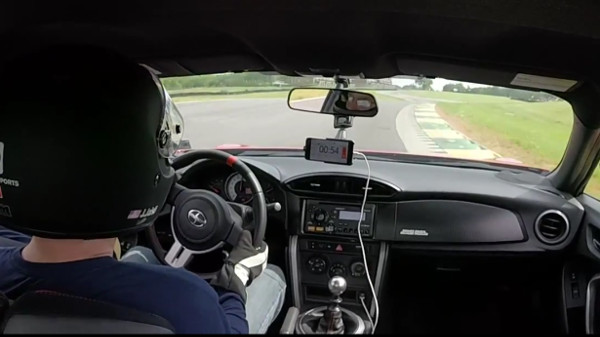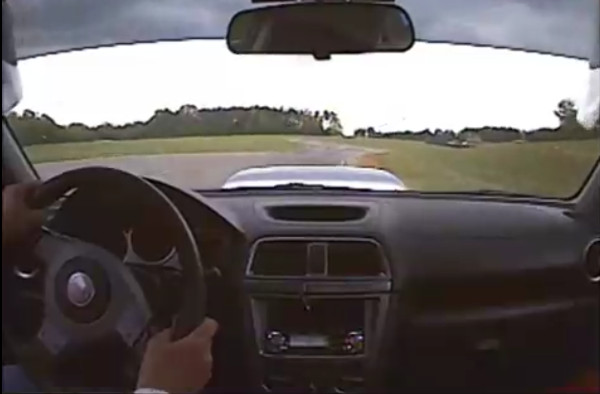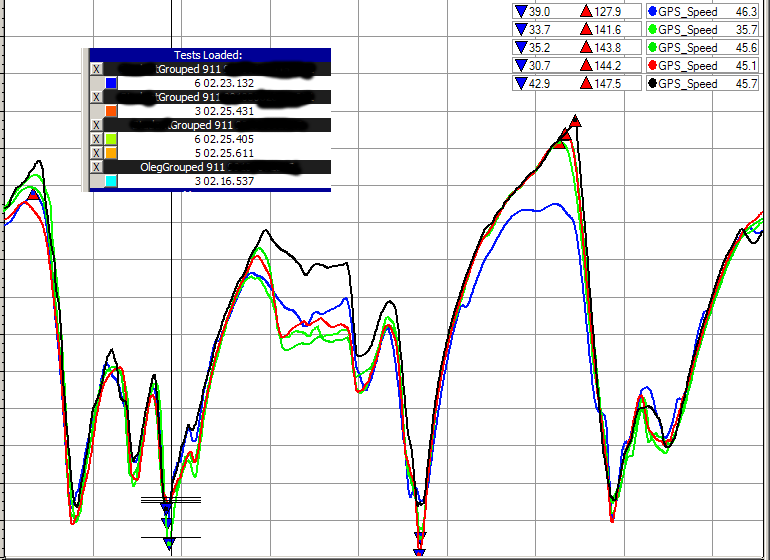VIR Full Intermediate Data Analysis
Published: June 24, 2015
This is analysis that I wrote for an intermediate driver that I worked with at VIR. The data was 3 sessions in the afternoon plus one session of me driving the car which has the black speed trace:
The first thing jumping at me from the data is later braking on the main straight and on the back straight. This was one of our goals during the event and you did very well here.
Comparing my black speed trace with your speed traces, the car is capable of braking later still on the back straight - I started braking at the 3 marker and the car can start at the 2.5 marker at the very least. However, you need to consistently and confidently brake at 3.5 before trying to start braking at 3 or 2.5.
On the main straight I start braking at roughly the same point you do - about 3.5 marker - the difference is I attain a higher maximum speed on the main straight by staying on full throttle until the braking point and I brake with the left foot.
Speaking of turn 1, the difference between my entry and your entry into it is trailbraking. You started working on the trailbraking entry during the event by bending the line into the turn; the next step - one which requires confidence which itself is a function of track time - is braking less, thus carrying more speed into the turn. You can also see from the black speed trace of me driving that the car continues to decelerate much deeper into the turn - in the case of turn 1, most of the way to the apex.
Besides turn 1 there are big differences in how we drove turn 5 (snake entry), climbing esses and turn 10. In the snake I still lift to rotate the car but this lift is timed with turn in and as a result, is much shorter. A point of note is that this lift happens in a wide range of speeds - its purpose is not to slow down the car but to move the weight to the front tires to make them bite better for the turn, a classic application of weight transfer.
We talked about straightening the car as it crests the hill in turn 8, the second corner of the climbing esses. This is crucial not only for driving the climbing esses at speed, but also for staying on track! Here is a video that demonstrates correct steering input through the climbing esses:
And here is a video in which the driver opens steering past the crest on the first lap and before the crest but still too late on the second lap:
Here are the exact points where the steering wheel starts to straighten. Correct:

Wrong (too late, past the crest):

Wrong (before the crest but still too late):

What I call "wrong" steering input does work at lower speeds, but at higher speeds it often causes the car to fly off track past turn 7.
Higher speed in turn 10 is largely a matter of confidence and consistency. It is a blind corner in that you do not see the exit when you turn in, hence it is important to enter the turn at consistent speed, car position and car attitude and from then on it is simply a matter of trusting the track and the car to be in the same place it was last lap and to do the same thing it did last lap, respectively.
During the event I asked that you start braking earlier when approaching turn 4. Looking at the data, the later you started braking for this turn the lower your speed is at the turn in point. In other words, you decelerate to a lower speed than is necessary when you start braking very late. Continue starting to brake a bit earlier than you think here and pay attention to whether you are braking comfortably or in emergency mode - the goal is to brake as late as possible while still being comfortable in the braking zone, by which I mean you don't think you are going to overshoot the turn in point.
You have good consistency for an intermediate driver. That said, there is definitely room for improvement. Consistency is a function of reference points and track time - remember what your reference points are for braking in every corner and hit them every lap.
An interesting point of note is that your fastest lap was in the first afternoon session. Your aggression and, consequentl, pace decreased late in the afternoon. This is normal for intermediate drivers but a good thing to be aware of as you progress in your track experience. Developing endurance is largely a mental process.
Tagged: data analysis

 Visit our
Visit our